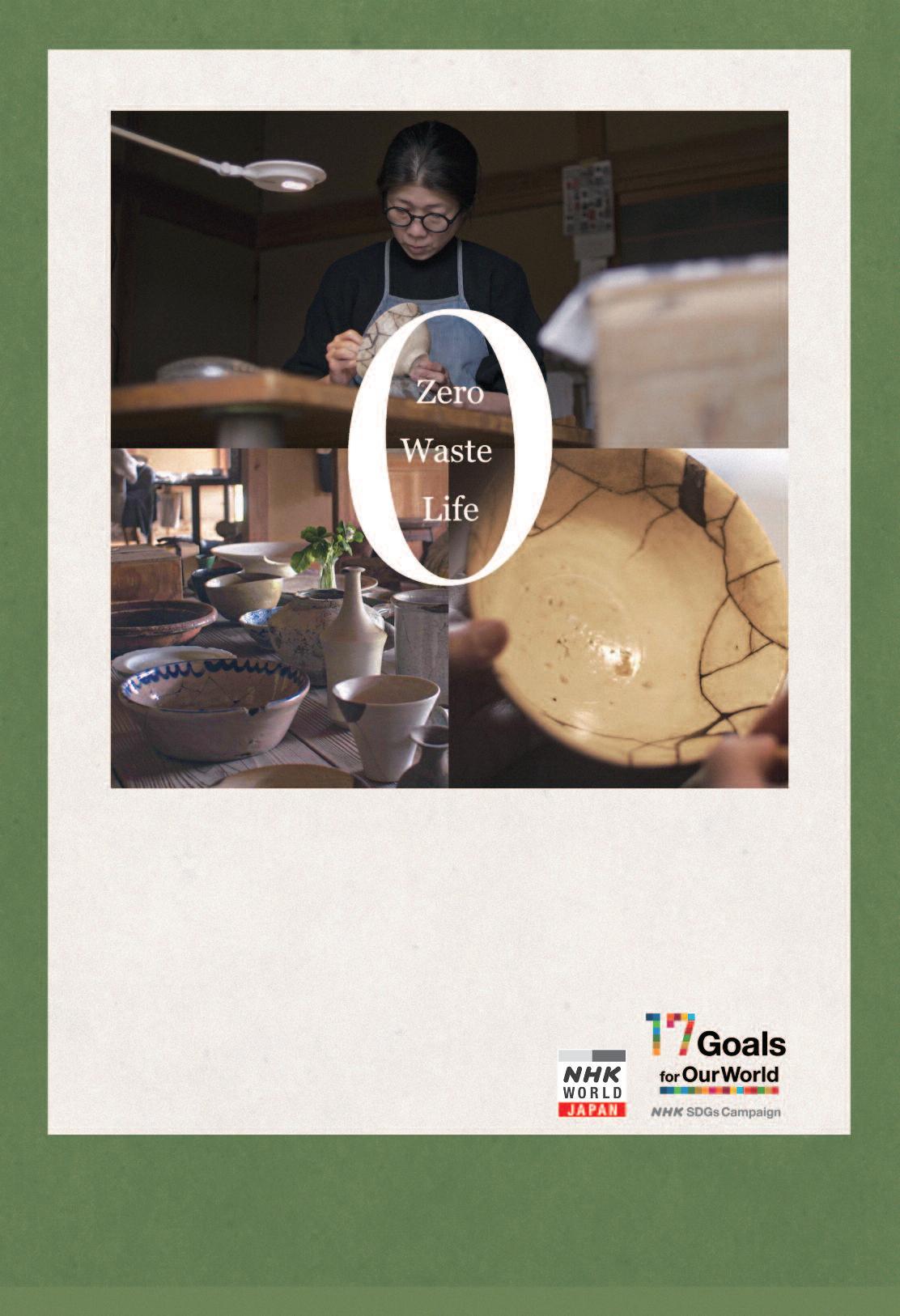




To avoid a recurrence of the 11 March 2011 tragedy, the Japanese authorities have undertaken the construction of a gigantic concrete barrier to prevent tsunamis.

It is 14:46 on 11 March 2011, and half of Japan is shaking as a long and powerful seismic tremor hits the north-east coast of the country The Great East Japan Earthquake of 11 March was the most powerful quake ever recorded in Japan, and the fourth most powerful earthquake the world has felt since modern records began in 1900 Following this huge tremor, a gigantic tsunami struck the north-east region of Tohoku killing almost 15,000 people and leaving 2,500 more missing “3 11” was the largest natural catastrophe to hit Japan since the 1995 Kobe earthquake This year is the tenth anniversary of the quake, and reconstruction efforts in the Tohoku area continue Whole towns and their communities are slowly being rebuilt Some are relocating further inland, away from the ocean. Others, like the town of Onagawa in Miyagi Prefecture, have decided to build their new houses and offices on a series of artificial plateaus – huge flat-topped hills, which it is hoped will keep the new towns out of danger At sea level, as a reminder of the tragedy, are the remains of a ruined house at the side of new road next to a convenience store.
One of the biggest projects underway, however, is a seawall and wave barrier, which is already being called the “The Great Wall of Japan”
S t r e t c h i n g s o m e 4 3 2 k i l o m e t e r s f r o m t h e northern prefecture of Iwate to Fukushima Prefecture in the south, and reaching a height o f 1 5 5 m e t r e s a t s o m e p o i n t s , t h e “ G r e a t Wall” has become a concrete link between the prefectures and their shared memories of the 3 11 disaster Though it will help protect communities from future threats, the wall is unsightly and cuts its way haphazardly through the landscape, separating the fishing villages from the sea and destroying the surrounding countryside. To date, the cost of this huge project is estimated to be around 9,2 billion pounds Everyday, almost 10 years after the disaster, heavy duty trucks can be seen trailing along the coast roads of Miyagi and Iwate transporting soil, sand and other materials f o r t h e w a l l ’ s c o n s t r u c t i o n W h e r e v e r y o u arrive in port along this coast, you are greeted by the same sight: a light grey barrier running along the sea ’ s edge. In some places it’s higher than others, sometimes it’s a steep slope, sometimes a huge sheer wall, but it has just one purpose: to protect people from tsunamis. The main idea behind building the seawall is protection as well as slowing the speed of a

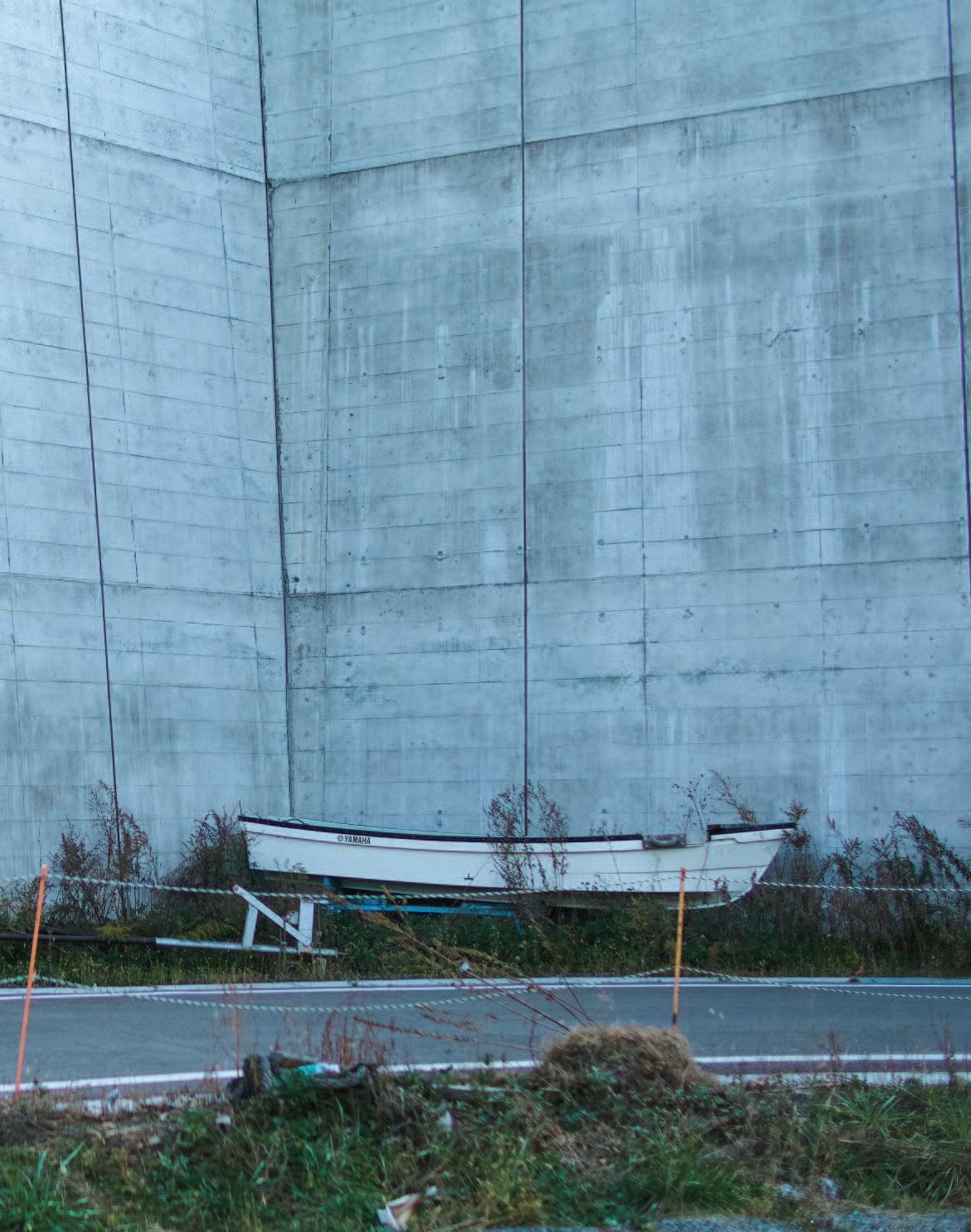
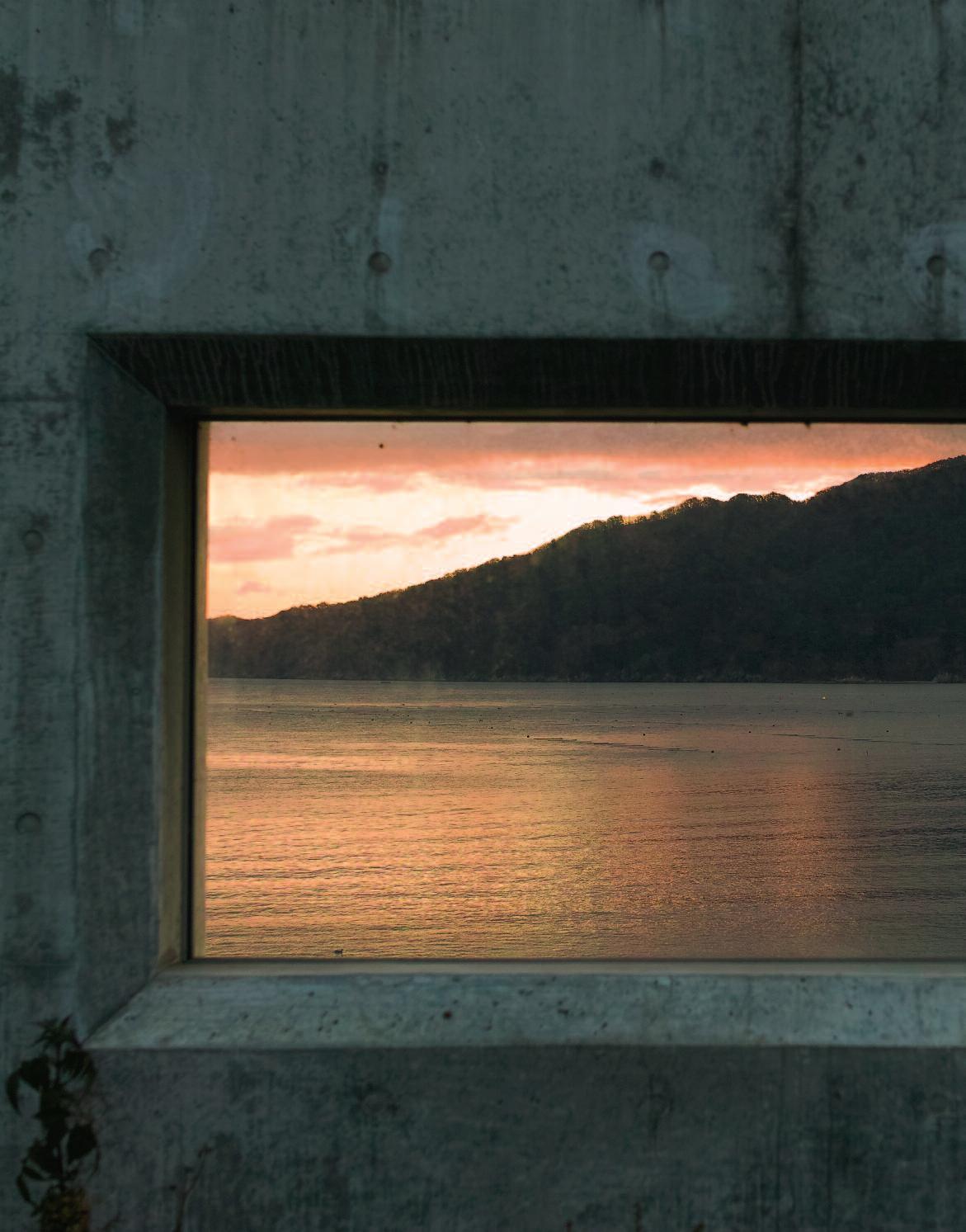

large wave, to “gain some precious seconds or minutes in the event of a major tsunami”. This human-made barrier can hold back the sea, but also helps reduce the power of the wave and delay the flooding In 2011, some p e o p
a couple of minutes leeway
A large majority of coastal towns (with the support of residents) voted for the construction of the wall. One of the conditions of the plan to rebuild houses in some towns was the construction of a seawall before starting to rebuild private homes But some residents disagree They understand that the wall can protect them, but fear that their connection to the sea will be severed and they could lose the ability to recognise when the sea poses a threat They worry that in the case of another major earthquake they will not be able to spot changes in the sea ’ s character or notice the water receding rapidly, which heralds a potential tsunami. When they see some of the small window-like openings along the top of this high wall, they think “Is this some kind of cynical joke against us?”
Akahama in Otsuchi, Iwate Prefecture, is the area closest to the sea It’s also where, a ship notoriously crashed onto the roof of a building a f t e r b e i n g s w e p t a
h i g h waves – one of the most iconic images of the tsunami The residents insist that homes in the district should be moved to higher ground instead They say that a 14 5-metre seawall would not only provide inadequate protection against another big tsunami, it would obscure their view of the ocean Most of Akahama’s residents work in the fishing industry and fear being cut off from their livelihood.
Taro is a small town in Iwate Prefecture where many depend on the sea for their livelihood It is a small isolated fishing port in a bay, and like other fishing ports in the Sanriku area in Tohoku, tsunamis and the dangers posed by t
Walking in the hills surrounding the village you will find small Shinto shrines in different places indicating where, in the past, the floodwaters from a tsunami reached if the shrine was not swept away. Throughout its history,
As here in Miyako, Iwate Prefecture, the small openings onto the landscape do not compensate for its almost complete disappearance behind the wall
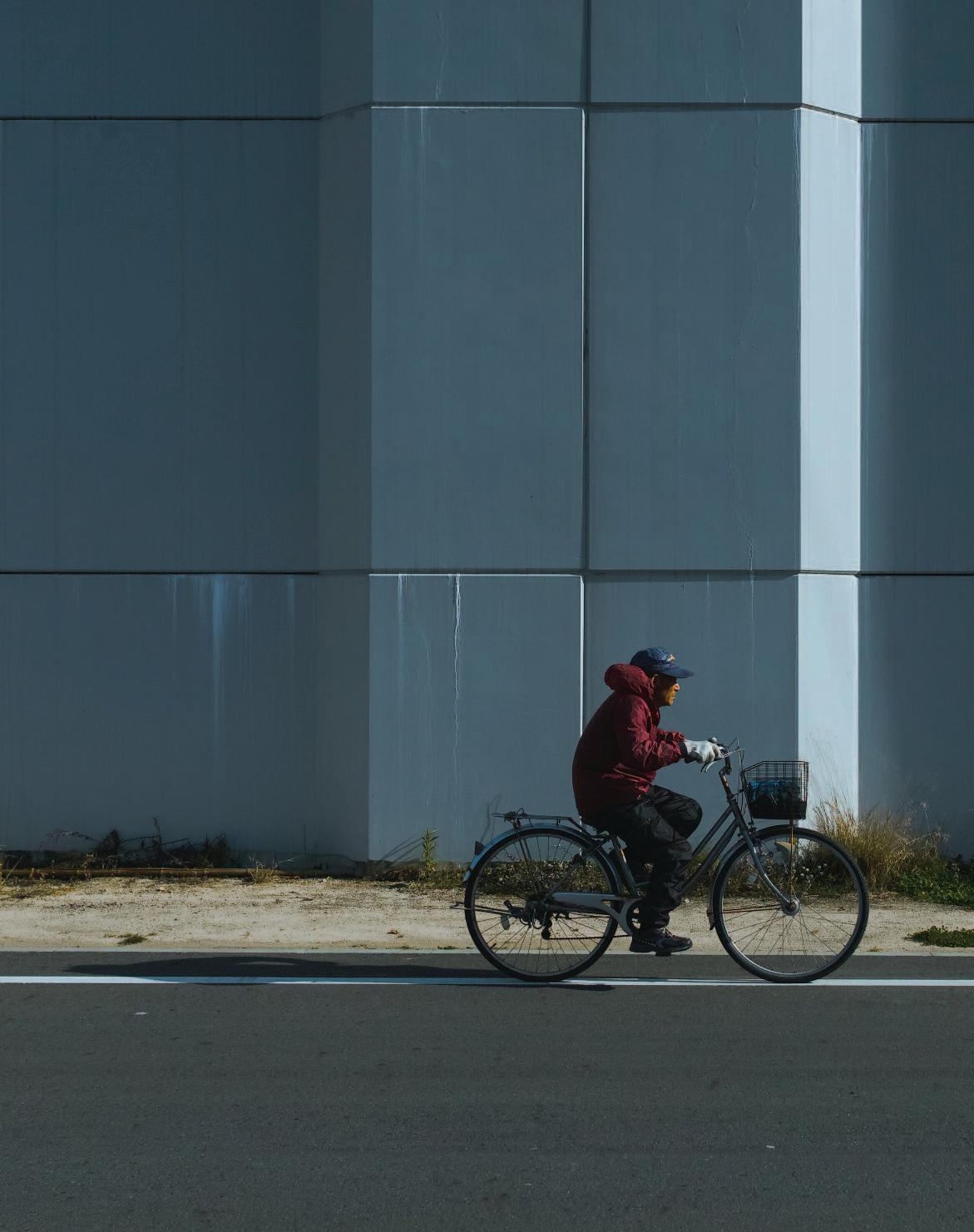
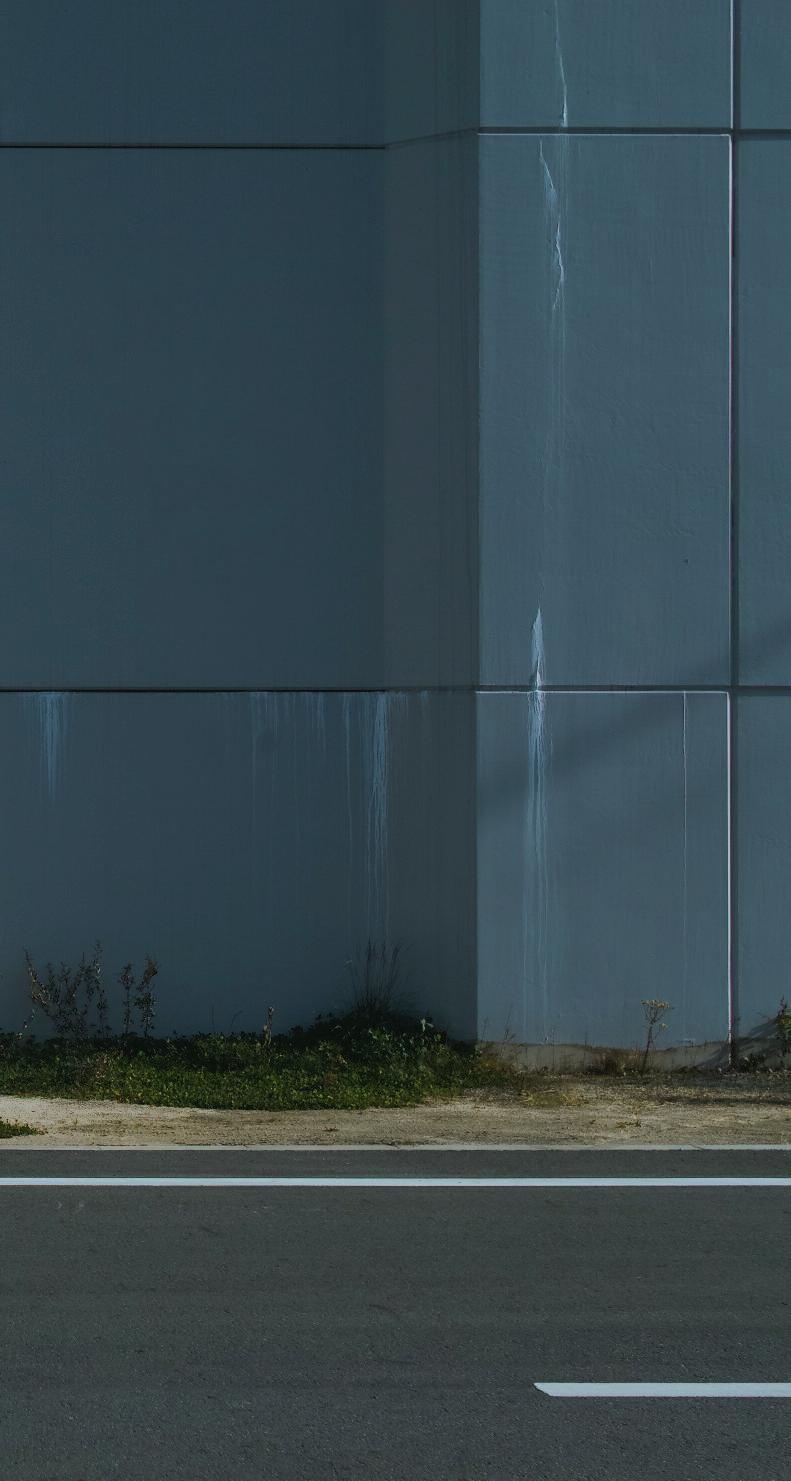
Taro has been destroyed four times by tsunamis : in 1611, 1896, 1933 and 2011. Due to its history of repeated destruction by huge waves, a double seawall in the form of an “X-shaped” structure was constructed to protect the town
This seawall became world-famous as the perf e c t p r
against tsunamis” The X wall was 2 4 kilometers long and 10 metres high, known as “Banri no Chojo” (Great Wall of China in J
h tsunami Unfortunately, in a sad example of our inability to control nature, Taro was hit by a tsunami of between 12 and 15 metres high in March 2011 The natural power of the wave tore away 500 metres from some p a
about the protection offered by the wall, some Taro residents climbed the wall on 11 March to “watch the wave ” coming in This resulted in 181 death or missing
Four years after the tsunami, on 22 November 2015, a " town opening" ceremony was held in Taro after the completion of 450 new houses They were built between 40 and 60 metres a b o v e s e a l e v e l . T a r o ’
Seawall of Japan” is a 14 7-metre-high wall to protect the bay from tsunamis Next to the municipal baseball field where the local team p l a y a n
Taro’s old, partially destroyed seawall can be seen Some parts of the wall have been rebuilt, others are used as a “memorial” to how useless i
struck the town on that cold Friday afternoon
One of the arguments put forward by residents and people against the construction of this seawall was its effect on the natural environment of the coastal area The Sanriku coastal a r e a ( f
Miyagi Prefecture) is famous for its wild and beautiful landscape with its jagged rock formations running alongside the Pacific Ocean, where land and sea meet at the foot of a huge cliff. The impact of this seawall, which runs for kilometres through this natural wild landscape in north Japan, still poses an environmental problem for the locals.
A man on a bicycle rides along the huge wall in Yamada, Iwate Prefecture
In a position paper, HIrOSHIGE Takashi from Waseda University explained that the wall will have an effect on “the fixed position of the coastline” He also notes that some city authorities have decided to lower the height of the wall in areas with no worthwhile assets behind it to protect
In a long research paper entitled “The Coastal Environment and the reconstruction Process after the Great East Japan Earthquake” (2018), Vincent Santiago Fandino and Erick Mas note the different points where the wall could have an effect on the coastal area not only environmentally but economically. The two researchers think that the wall could stop or slow down the geomorphology and changes in the sea level because it will block interaction between the sea and the shoreline. They also point out in their paper that “the seawall will have an impact on the transportation of sediments, and coastal erosion” This will result
for biodiversity The wall will also have an impact on the wildlife that regularly visits the shore at night. In their article, Fandino and Mas also write, “Finally, the structures are in general aesthetically displeasing and heavily i m
taching the local community from the sea. ” Ten years after the incredible images of total devastation, the northern part of Japan can see a light at the end of the tunnel Of course, the tragedy of loved ones who perished in this disaster is still felt, but the completion of the reconstruction will give the towns and their inhabitants a new start The wall is a reminder of what happened and how powerful and uncontrollable nature can be The seawall is now an integral part of the northern coastal landscape, and for people living in the vicinity of the “Great Seawall of Japan” it has become part of everyday life
This Tohoku coastal area project has already inspired other parts of Japan. This year, in the city of Hamamatsu in Shizuoka Prefecture, the government has just finished building a titanic seawall 15 metres high and 17 5 kilometres long. The city of Hamamatsu is high on the “waiting list” of local areas at risk due to the probability of a severe Nankai Trough earthquake hitting the Kanto area sometime soon
NICOLAS DATICHE
Workers pouring concrete in Minami-Sanriku, Miyagi Prefecture
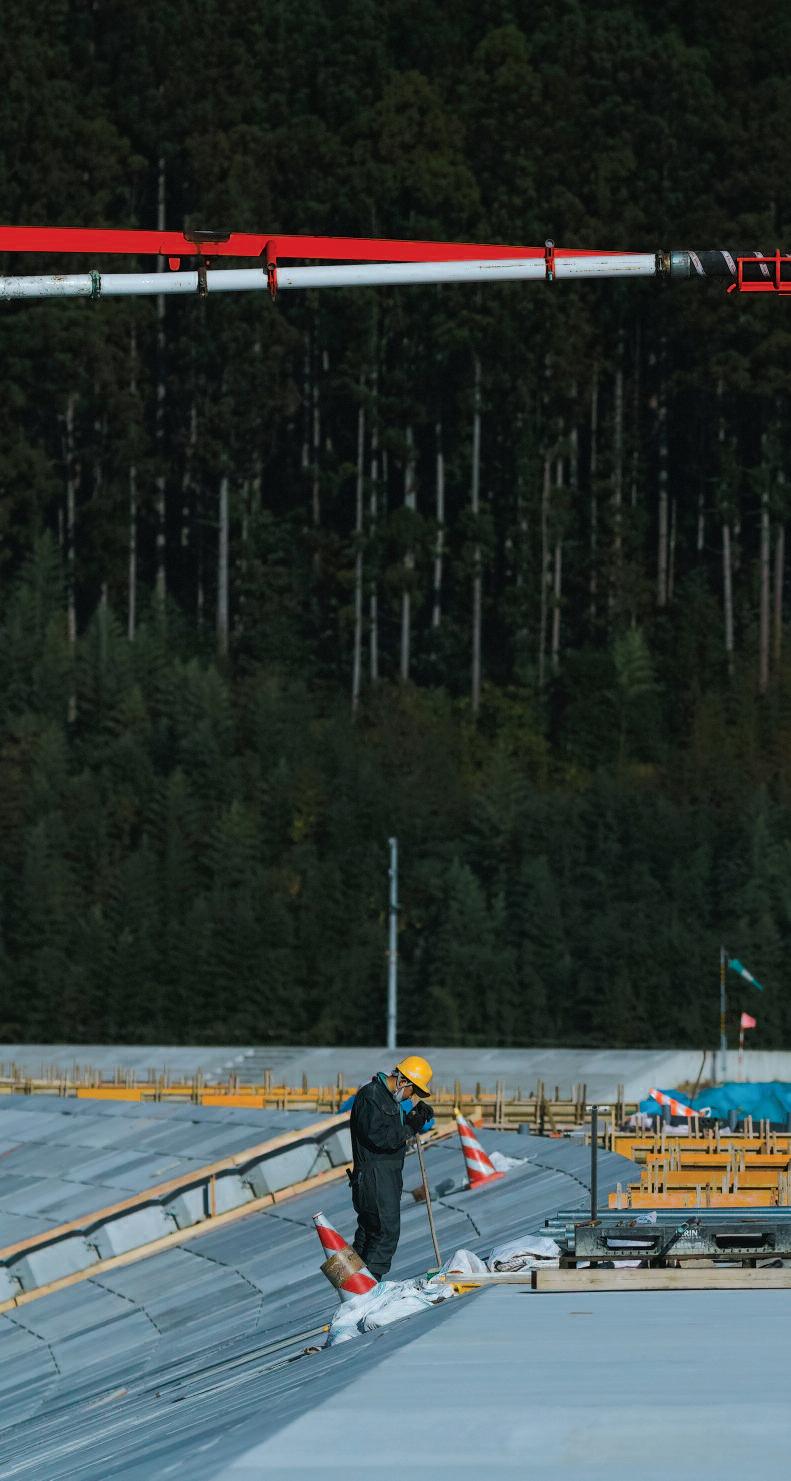
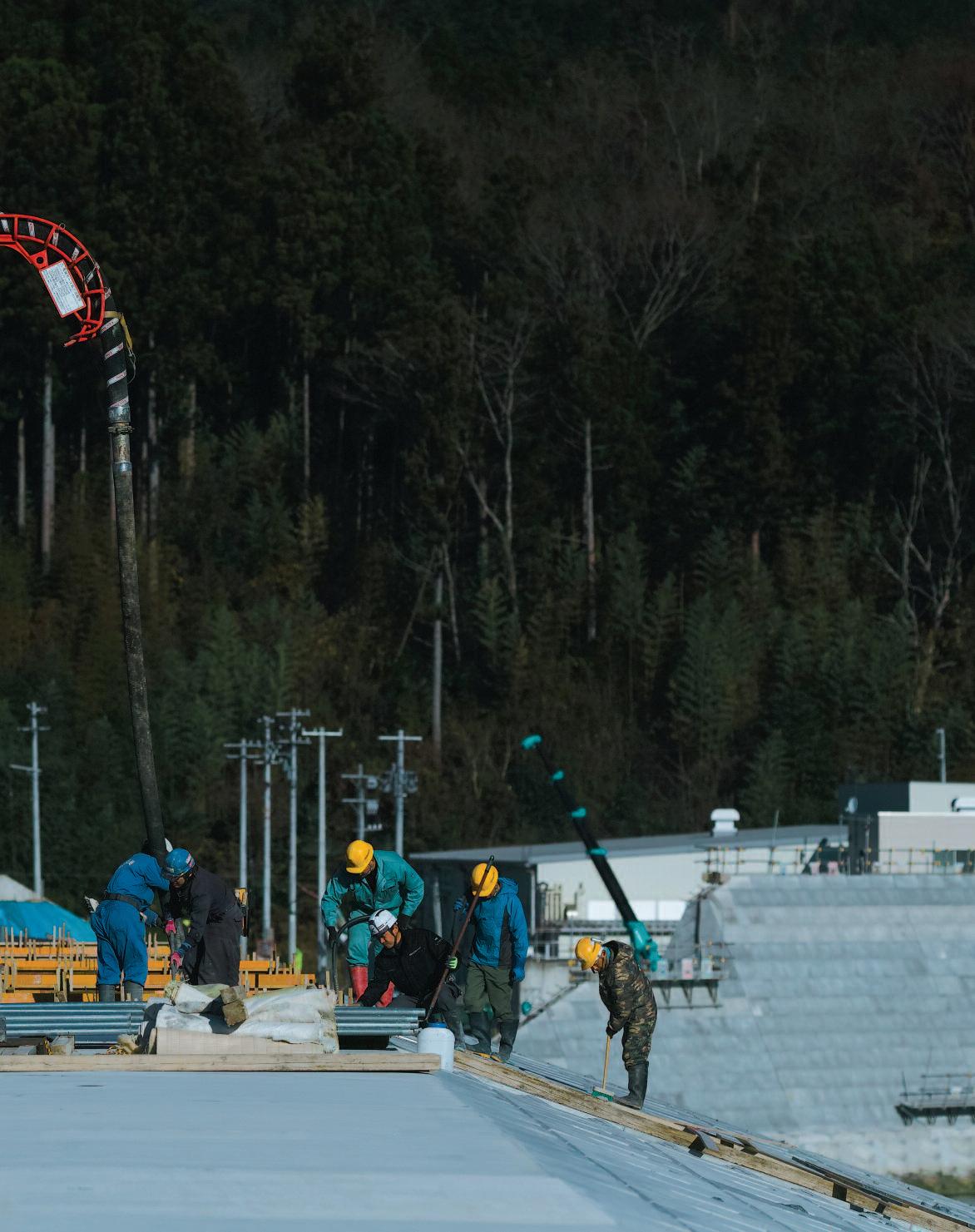
Pastry chef Yuri shares a new series of recipes for wagashi, a traditional Japanese delicacy.
Now that we are entering summer I would like to introduce a lovely cool Japanese sweet Kingyoku-kan is a jelly style sweet that is made from agar-agar
There are various styles and this is particularly attractive with a flower created inside. It is served chilled and with its coll appearance, it is a perfect sweet in warmer weather It is typical of Japanese sweets designed to give a total experience for all the senses. We can all be thrilled that it contains no fat, no gluten and is low calorie! You can get the ingredients in the UK but you will need to make shiro-an (white bean paste) which is the main ingredient in the flower and agar-agar for the jelly It takes practice to master the techniques for making the flower but it is a lot of fun and very satisfying
YURI LEE
www instagram com/wagashi art uk/ www instagram.com/wagashiinbloom/ www.wagashiart.com/
INGREDIENTS (for 6)
White bean paste 200g
Agar-agar 2g
Sugar 150g
Water 220g
Matcha powder 1tsp
Wilton gel colour
(blue, purple, violet)
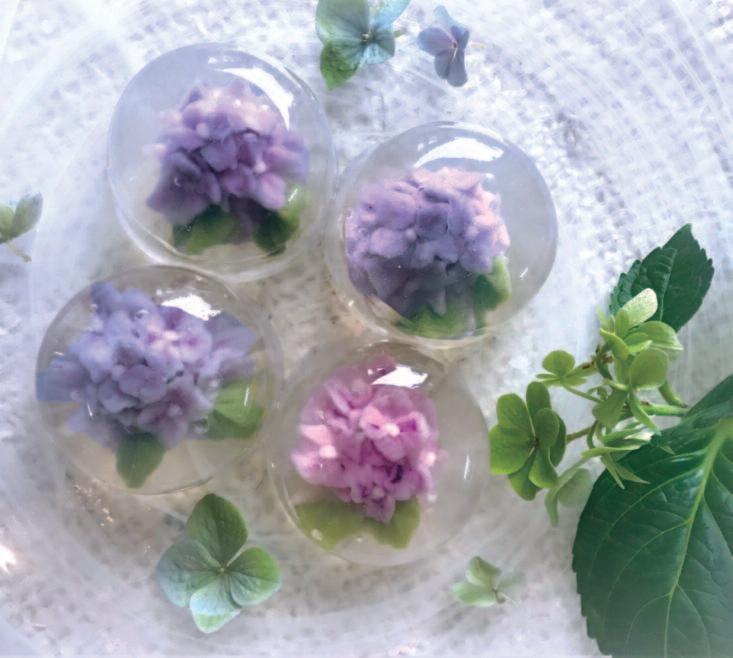
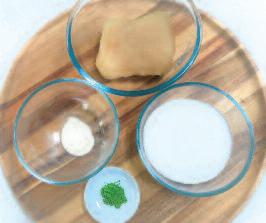
Flower nozzle (no 349, no 352)
Flower nail
Flower lifter
Baking sheet
Piping bag
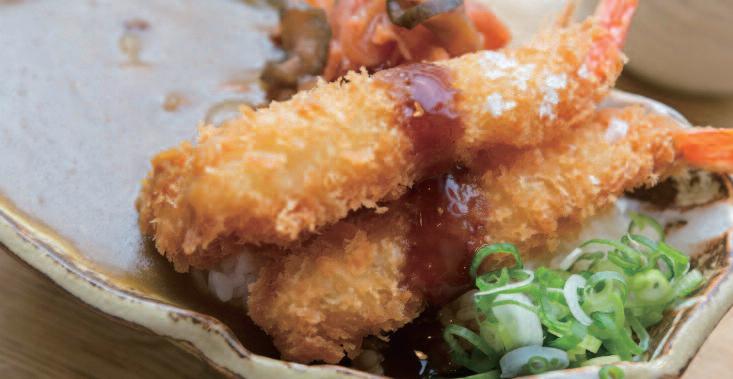
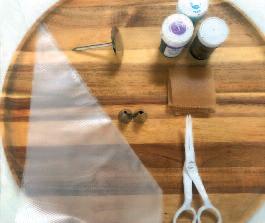


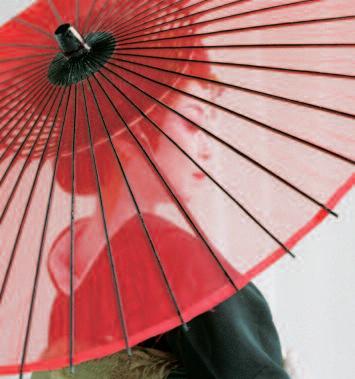
How to make bean paste piped flowers
1- Beat a white bean paste with the hand mixer until you get the right consistency to be able to hold a peak as shown in the picture (Reduce moisture with a microwave if it is too soft )

2- Colour the paste with your prefered hydrangea colours using food colourings Use some matcha powder to make a green paste for leaves (Wilton food colourings are used for the flowers in the picture ) Keep some without colouring for the base & centre of the flowers (Pictured on the left )

3- Put the hydrangea coloured bean pastes randomly into a piping bag with a nozzle 349 (Set the green paste aside for later )
4- Make a base for the hydrangea with an uncoloured bean paste.
5- Pipe hydrangea petals all around the base
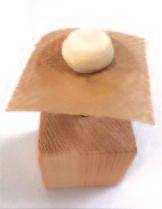
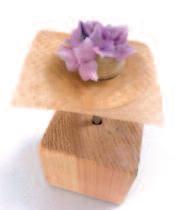

7- Put green bean paste into piping bag with a nozzle 352
8- Pipe two leaves
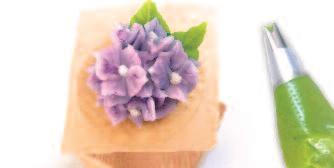
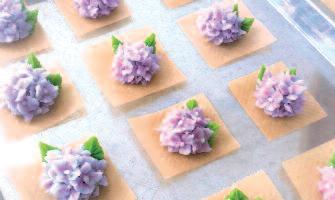
How to make a Kingyoku jelly (Make a jelly while freezing the piped flowers)
10- Mix agar-agar with the water and boil it until the agar-agar is well dissolved
11- Add the sugar and boil it for about a minute Let it cool
12- Put some Kingyoku jelly into small cups and put hydrangea flowers upside down and chill in a fridge


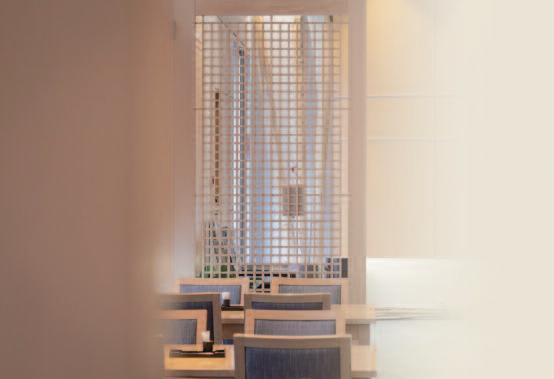



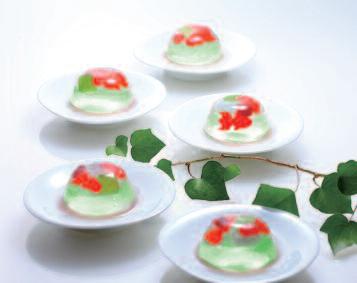



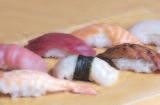



Published by Zoom Japan UK Limited
1 Kings Meadow, Osney Mead, Oxford OX2 0DP UK sales@zoomjapan.info
ISSN: 2050-5108 Printed in the UK
In cooperation with Zoom Japon (FR)- Ed Ilyfunet
Publisher: IWASAKI Hirohisa
Editorial: ODAIRA Namihei, Gabriel Bernard, Eric Rechsteiner, Nicolas Datiche, Gianni Simone
Translation: Susana Brown, Niki Mellor, Alan Gardner
Production: A Concept Ltd.
Sales: SAKAI Katsushi, TAKACHI Yoshiyuki, A Concept Ltd.
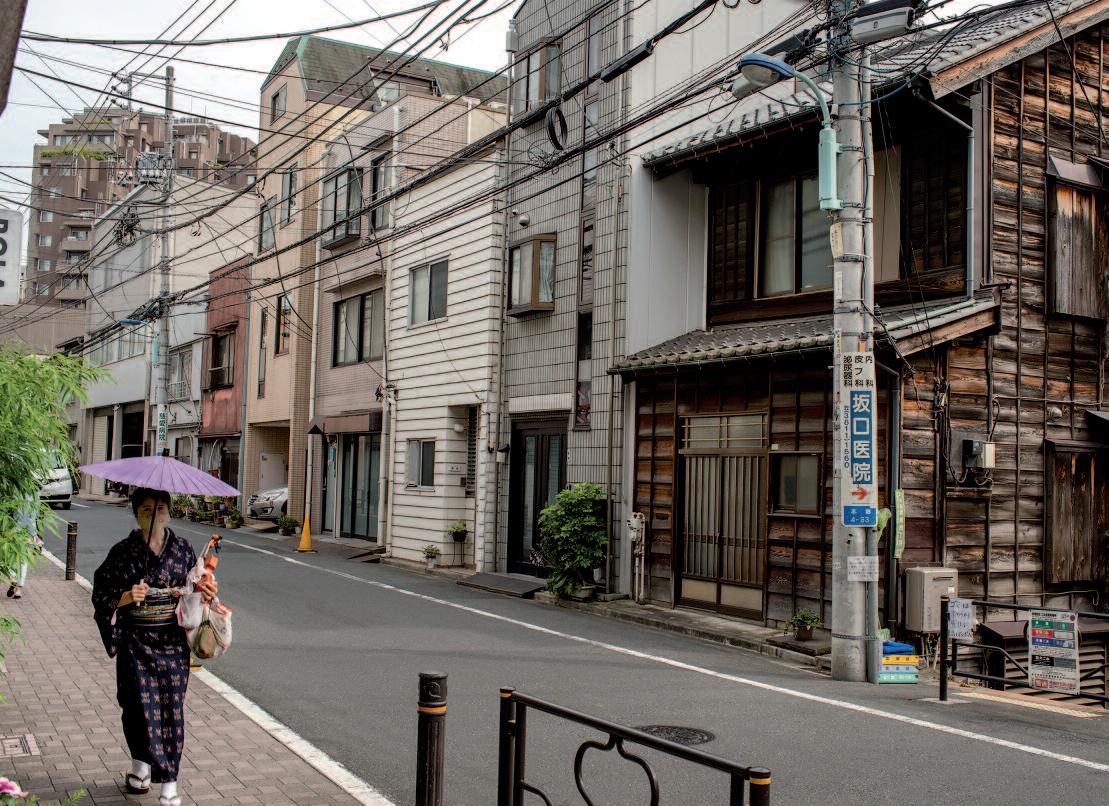
Hongo is one of the many districts in the capital where the numerous sloping streets are full of history.
Tokyo is often seen as a pedestrian-friendly place, probably because most of the more famous districts are pretty flat However, the city of Edo – as Tokyo used to be called – was built on the eastern end of the Musashino Plateau whose loam formation (a mix of sand, silt and volcanic ash) is highly permeable and over time has been carved by the area ’ s many rivers to form seven distinct plateaus divided by a branching network of valleys
The result is that Tokyo is full of slopes and stairways, some of them quite steep. In the city’s 23 special wards there are some 740 slopes (each one of them with a distinct name) As for stairways, the 17 wards comprising the hilly Yamanote area have as many as 2,939. In both categories, Bunkyo Ward is near the top of the list, and many of those slopes and stairways are concentrated in Hongo, Bunkyo’s eastern district, famous for its many publishers, research institutes, and especially the University of Tokyo’s main campus
A walk around the area should start from HongoS a n c h o m e S t a t i o n o n t h e T o k y o M e t r o
Marunouchi Line. Heading north, our point of entry into the maze of backstreets and alleys is T
derives its name from the fact that there used to be a high concentration of traders who sold tadon (‘coal dumplings’), a kind of fuel made by mixing charcoal powder and red algae Apparently, the term ‘tadon’ also refers to the fact that the final part of the slope was so steep that people who
stones Luckily, this section has been turned into a stairway with handrails up the middle. Hongo is also a place where many writers have
home in Iwate Prefecture and moved to Tokyo after clashing with his father over his religious and social beliefs It is said that the vegetarian MIYAzAWA wrote many of his stories while living in this area and subsisting on tofu and potatoes. However, he returned to Iwate after just seven months after learning that his beloved younger sister Toshi was ill He would die in 1933 at the age of 37. Indeed, death at a young age is a comm o n f
a t u r e o f s e v e r a l H o n g o - b a s e d a u t h o r s : ISHIKAWA Takuboku died at 26 and HIGUCHI Ichiyo at 24.
almost say that modern Japanese literature was born here TSUBOUCHI is considered a seminal figure in Japanese drama, but he wrote novels as well Tosei Shosei Katagi [Portraits of Cont
modern novels in Japan, and his book of criti-
They both came out in 1885
In 1921, 25-year-old MIYAzAWA Kenji left his
HIGUCHI’s presence is still strongly felt around the area, both because a couple of places relating to her life still remain and because Hongo appears in some of her stories. In order to immerse ourselves in HIGUCHI’s world, it’s better to avoid Tadon-zaka’s stairway for the moment and take instead a detour to the left where we can experience the evocative atmosphere of old Tokyo as it looked many years ago.
I
n Tadon-zaka and Abumi-zaka, that we discover a cluster of old wooden houses surrounded by s
and it’s a miracle that they have survived to this
b r i n g s b a c k m e m o r i e s o f a c i t y t h a t i s a l l b u t forgotten elsewhere.
Finally, after descending yet another short flight of stairs, we reach the place where HIGUCHI lived for three years, from 1890 to 1893, between the a g e s o f 1 8 a n d 2 1 , w i t h h e r m o t h e r a n d s i s t e r . While the building itself is gone, a well that is said to have been used by HIGUCHI can still be found in a quiet yard The hand pump can still be used to draw water today, but if you want to drink it, you are advised to boil it first HIGUCHI lived at three different addresses around Hongo during her short life: when she was a child she lived across from the University of Tokyo’s red Gate, while her masterpieces including the short story Nigorie [Troubled Waters] and the novella Takekurabe (translated in English under different titles: Growing Up and Child’s Play) were written in a house in Hakusan Street where she died of tuberculosis
After leaving HIGUCHI’s hidden yard, we turn into a narrow residential street called Kiku-zaka S h i m o m i c h i ( l i t e r a l l y “ t h e s t r e e t u n d e r K i k uzaka”) It is said that a river used to flow along this street Indeed, the ground on both sides rises as if it were river banks.
A n o t h e r s t a i r w a y l e t s u s c l i m b u p o n e o f t h e “banks” and reach Kiku-zaka, a gentle, 600-metre long slope that is the heart of the district Nearly all the wooden structures disappeared during the w a r o r d u e t o a g e , a n d m o s t o f t h e s h o p s a n d houses along the street are relatively new, but the area retains a nostalgic feel The slope’s name, by the way, is a reminder that this was once a broad a r e a o f k i k u ( c h r y s a n t h e m u m ) fi e l d s T h e chrysanthemums may have gone, but even now all the alleys and slopes are full of potted plants and seasonal flowers, which the residents put in front of their houses
Today, Kiku-zaka is a quiet residential district, but there was a time when it was a lively commercial area filled with merchant houses with shop fronts called machiya This building style w a s p o p u l a r i n t h e m i d - E d o p e r i o d ( l a t e 1 8 t h century) and the Meiji period (1868-1912) and consisted of a shop, a storehouse and the merchant’s residence all under the same roof Luckily for us, a single example of machiya – the former Iseya pawn shop – has been preserved for p o s t e r i t y . E s t a b l i s h e d i n 1 8 6 0 , i t r e m a i n e d i n business until 1982, after which it was declared a Tangible Cultural Property, and today it can be visited at the weekend: its roof design, projecting lattice windows, and goblin-shaped roof tiles are clear signs of Edo-period architecture Originally, the pawn shop was actually located in Tokyo’s Adachi Ward and it was relocated to i t s p r e s e n t a d d r e s s i n 1 8 8 7 – a h u g e t a s k t h a t required a great deal of money and the work of 396 artisans including 200 plasterers Because of
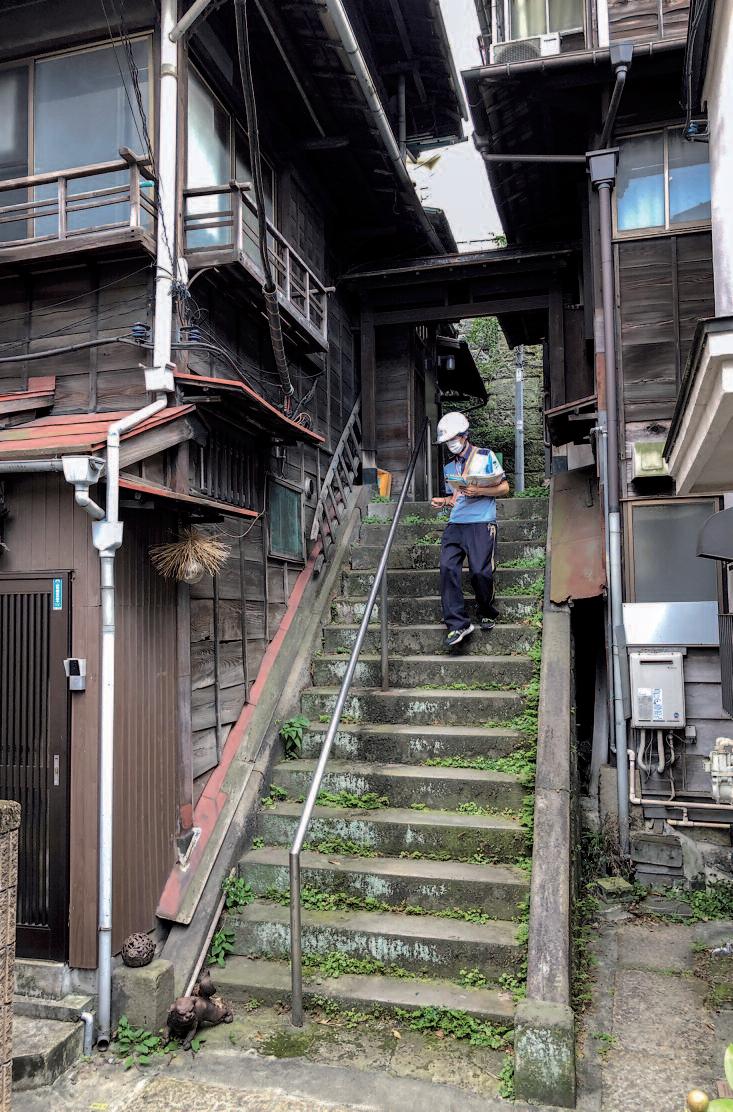
shop, they went to great lengths to ensure its was safe, particularly from the many fires that were a c o m
work, for instance, was at one time made of brass, while below the hallway floorboards in front of the entrance we can still find a compartment to store kneaded mud to seal the storehouse door edges in the event of fire
The Iseya pawn shop is another place that played an important role in HIGUCHI’s life She was born to a minor samurai family, but her father died when she was 17, leaving his wife and two daugh-
ters in poverty HIGUCHI was named as head of the family, and she decided to become a writer while her mother and sister contributed to the family income by laundering and sewing kimono, but they continued suffering financial hardships In her diary on 28 August 1892, she writes: “My work is yet to be recognised; there is no way to get even a cent, ” while on 15 March 1893, she reports: “Since yesterday, there is not even one cent left in the whole house.” It was in those bleak times when she could not make ends meet that HIGUCHI took her family’s few things of value to the pawn shop
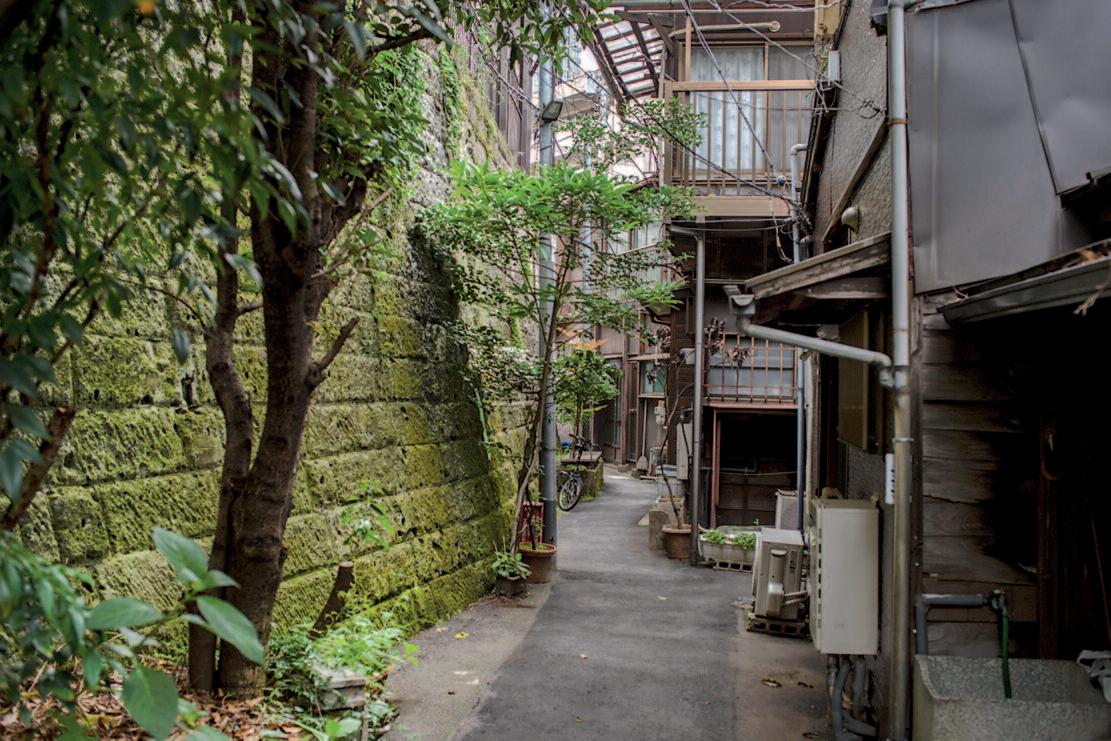
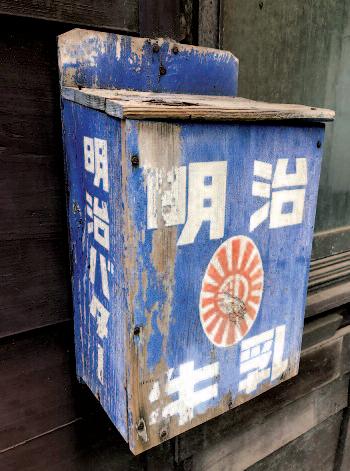
Bidding farewell to Iseya’s dark memories, we continue exploring the slopes that branch out from Kiku-zaka and climb further up the plateau In the past, Hongo had as many as 300 boardinghouses catering to the students who attended the nearby University of Tokyo and the many people who came from around the country to
petition the ministries in Kasumigaseki Among them was Homeikan. Built in the Meiji period, it survived the 1923 Great Kanto Earthquake and was later purchased by the current owner, the KOIKE family
Many intellectuals and newsmen used to board h
period, its three locations were full of petitioners
Then, in 1946, the government enacted an in business law, and the Homeikan began operating as a hotel, attracting both students on school trips and those who took the university entrance exams
In 2000, after overcoming many difficulties, the hotel was designated as a Tangible Cultural Property However, the change in social trends and people’s tastes has caused the Homeikan to strug-
charming but aging building, and an increasing
attractions that newer hotels can offer Finally, this year, the hotel posted a message on its website announcing that “due to various circumstances, we will be closed for a while from the end of May”
If you still have some energy left, Hongo has many more slopes that are waiting to be checked out,
each one with its own unique story Honmyojizaka, for instance, takes its name from a Buddhist temple that, during the Edo period, was located on the other side of Kiku-zaka and is known as the source of the Great Fire of Meireki, which reduced a good part of the city to ashes. Then, near the university’s red Gate there is Miokurizaka (Send-off Slope) In the Edo period, people w h o
expelled from the city. A bridge was built at the base of the slope, and it was there that they bade farewell to their families before departing in tears Finally, there is Fujimi-zaka on the west side of the Water Supply Station Park from where, during the Edo period, Mount Fuji could be clearly seen beyond the Ochanomizu valley There are many slopes with the same name scattered around Tokyo. Before the Meiji period, there were no tall buildings in Edo, and no pollution, and people c
from the city centre.
On the way home, don’t forget to climb Tadonzaka’s steep stairway (Do you remember? We left it for last ) and pay a visit to the small but charming Bunkyo Furusato History Museum where you will find more interesting information about Hongo’s storied past
GIANNI
SIMONE





